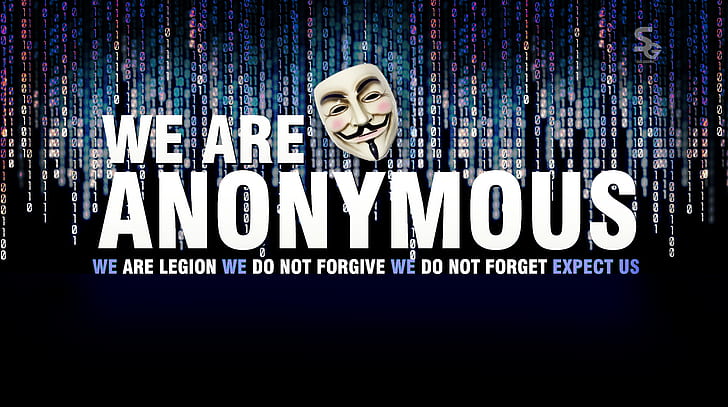
The Ultimate Cybersecurity Guide 2025: 15 Tips to Stay Safe Online
Cybersecurity tips, online safety, internet security 2025, cyber threats, digital protection, personal data security.
Why Cybersecurity is More Important Than Ever in 2025
The digital world has never been more connected—and never more dangerous. With remote work, online banking, digital shopping, and social media dominating our lives, cybercriminals have more opportunities than ever. According to Cybersecurity Ventures, global cybercrime costs are expected to reach $10.5 trillion annually by 2025.
This means that protecting your personal and professional data is no longer optional—it’s essential for survival in the digital age.
In this guide, we’ll share 15 powerful cybersecurity tips for everyday internet users, explain why each tip matters, and give real-world examples of cyber attacks to help you understand the risk.
Why Cybersecurity Matters in 2025
Here are the key reasons why cybersecurity should be your top priority:
-
Massive increase in cybercrime – Ransomware, phishing, and identity theft have skyrocketed.
-
AI-powered attacks – Hackers are using AI to create realistic phishing emails, deepfake videos, and voice scams.
-
Work-from-anywhere risks – Remote workers often use insecure networks, making them easy targets.
-
Regulatory compliance – Laws like GDPR and ISO 27001 make companies legally responsible for data breaches.
Cybersecurity is no longer just about avoiding viruses—it’s about protecting your identity, finances, and reputation.
15 Practical Cybersecurity Tips for Everyday Users (Explained with Examples)
Here are 15 actionable tips that can dramatically improve your online safety:
1. Use Strong, Unique Passwords for Every Account
Weak or reused passwords are like leaving your house unlocked. Hackers exploit this with credential stuffing attacks, where they try stolen passwords on multiple sites.
✅ Example:
If you use john123 for email and social media, and one site is breached, hackers can access all your accounts.
Best Practices:
-
Use 12+ characters combining uppercase, lowercase, numbers, and symbols.
-
Avoid personal info like birthdays or pet names.
-
Use a password manager like LastPass or Bitwarden to store passwords securely.
2. Enable Two-Factor Authentication (2FA)
2FA adds an extra layer of protection by requiring a code or biometric verification along with your password.
✅ Example:
Even if hackers steal your Facebook password, they can’t log in without the 2FA code sent to your phone or generated by an authenticator app.
Best Practices:
-
Prefer authenticator apps (Google Authenticator, Authy) over SMS codes, which can be intercepted.
-
Enable 2FA on all critical accounts: email, banking, social media.
3. Avoid Clicking on Suspicious Links
Phishing attacks remain the #1 way hackers steal credentials. Fraudulent links often lead to fake login pages or malware downloads.
✅ Example:
An email claims: “Your PayPal account is locked. Click here to verify.” The link looks legit but takes you to a phishing page.
Best Practices:
-
Hover over links before clicking to check the actual URL.
-
When in doubt, visit the official website manually instead of clicking links.
4. Regularly Update Your Software and Apps
Hackers exploit outdated software to gain access. Updates patch security holes.
✅ Example:
The WannaCry ransomware attack (2017) infected thousands of computers running old Windows versions. A simple update could have prevented it.
Best Practices:
-
Enable automatic updates for operating systems, browsers, and apps.
-
Remove unused apps—they can become security liabilities.
5. Use Antivirus and Anti-Malware Tools
Think of antivirus as your digital security guard. It scans for malicious files and blocks threats.
✅ Example:
A disguised virus named invoice.pdf.exe tries to install ransomware. Antivirus software catches it before damage occurs.
Best Practices:
-
Use reputable software: Bitdefender, Norton, Windows Defender.
-
Schedule weekly scans and keep virus definitions updated.
6. Avoid Public Wi-Fi Without Protection
Free Wi-Fi is a hacker’s playground. Cybercriminals can intercept your data or create fake networks.
✅ Example:
You connect to Free_Airport_WiFi and check your bank account. A hacker sniffs your credentials with packet-sniffing tools.
Best Practices:
-
Use a VPN (Virtual Private Network) like NordVPN or ExpressVPN to encrypt traffic.
-
Avoid accessing sensitive accounts on public networks.
7. Backup Your Data Regularly
Backups protect you from ransomware, hardware failures, and accidental deletions.
✅ Example:
Ransomware encrypts your files and demands $500 to unlock. If you have a backup, you don’t need to pay.
Best Practices:
-
Use cloud storage (Google Drive, OneDrive) + offline backups on external drives.
-
Follow the 3-2-1 rule: 3 copies, 2 different media, 1 offsite.
8. Be Careful with Social Media Sharing
Oversharing personal info can lead to identity theft or targeted scams.
✅ Example:
Posting “Vacation in Paris for 10 days!” alerts thieves your home is empty. Also, security questions like “Your pet’s name?” can be guessed from your posts.
Best Practices:
-
Don’t share sensitive info like phone numbers, addresses, or travel plans publicly.
-
Set your profiles to private.
9. Use Secure Websites (HTTPS)
Always look for HTTPS before entering payment details or passwords.
✅ Example:
You want to buy a phone from http://cheapgadgets.com. Without HTTPS, hackers can intercept your payment info.
Best Practices:
-
Shop only on sites with HTTPS and a padlock symbol.
-
Avoid deals that seem too good to be true on unverified sites.
10. Log Out of Shared Devices
Forgetting to log out on public computers exposes your accounts.
✅ Example:
You log into Gmail at a cyber café and forget to log out. The next user can read your emails.
Best Practices:
-
Always log out and clear browsing history on shared devices.
-
Use incognito mode for temporary access.
11. Lock Your Devices
Unattended, unlocked devices can leak personal and professional data.
✅ Example:
Your phone is stolen without a passcode. Thieves access your banking apps and photos.
Best Practices:
-
Use PIN, fingerprint, or face recognition.
-
Enable Find My Device and remote wipe.
12. Be Wary of Email Attachments
Hackers disguise malware as invoices or resumes in email attachments.
✅ Example:
You receive an email titled “Your invoice” with invoice.docx. Opening it infects your computer.
Best Practices:
-
Scan attachments with antivirus before opening.
-
Never open files from unknown senders.
13. Use a Password Manager
Managing 50+ strong passwords manually is impossible. Password managers store them securely.
✅ Example:
Instead of writing down passwords, tools like 1Password or Dashlane auto-fill credentials and store them with encryption.
Best Practices:
-
Use a trusted password manager.
-
Protect it with a strong master password + 2FA.
14. Think Before Downloading Apps
Free apps from third-party sites often contain malware.
✅ Example:
You download a free movie streaming app from an unknown site. It secretly installs spyware.
Best Practices:
-
Download only from Google Play Store or Apple App Store.
-
Check permissions before installing.
15. Stay Educated About Cyber Threats
Hackers evolve daily, so should you.
✅ Example:
Scammers use deepfake voice calls to impersonate your boss and request urgent fund transfers.
Best Practices:
-
Follow cybersecurity blogs, webinars, and news sites.
-
Take online security awareness training regularly.
How Sidigiqor Technologies Can Protect Your Business
At Sidigiqor Technologies, we specialize in end-to-end cybersecurity solutions for businesses of all sizes. Our services include:
-
✅ Managed Security Operations (SOC Services)
-
✅ Threat Intelligence & Incident Response
-
✅ Compliance Audits (ISO 27001, GDPR)
-
✅ Data Backup & Recovery Solutions
-
✅ Penetration Testing & Vulnerability Assessments
Why Choose Us?
-
24/7 Security Monitoring
-
Certified Cybersecurity Experts
-
Affordable, Scalable Plans for SMEs & Enterprises
-
Proven Track Record in Cyber Protection
📞 Contact Us Today:
📧 Email: info@sidigiqor.com
📱 Phone: +91-9911539101
🌐 Website: www.sidigiqor.com
-
“Secure Your Digital World with Sidigiqor.”
-
“Your Data, Our Responsibility.”
-
“Stay Ahead of Hackers with Smart Protection.”
-
“Think Security, Think Sidigiqor.”
FAQs
1. What is the most common cyber threat in 2025?
Phishing remains the most common threat, but AI-powered attacks and ransomware are on the rise.
2. How often should I change my passwords?
Every 3-6 months, or immediately if you suspect a breach.
3. Is free antivirus software enough?
Free antivirus is okay for basic protection, but premium solutions offer advanced features like ransomware protection and firewalls.
4. What is the cost of a data breach for small businesses?
On average, $150,000 to $4 million, depending on severity.
5. What is the best VPN for public Wi-Fi?
Top options include NordVPN, ExpressVPN, and ProtonVPN.
6. Should I use SMS for 2FA?
Avoid SMS if possible—use authenticator apps or hardware keys.
7. How can I tell if a website is secure?
Look for HTTPS, the padlock icon, and check the domain carefully.
8. What is ransomware and how can I avoid it?
Ransomware locks your files until you pay a ransom. Avoid suspicious emails, back up data, and use updated antivirus.
9. Do I need cybersecurity if I’m not tech-savvy?
Yes! Hackers target everyone, especially non-tech users who are easier to trick.
10. How can Sidigiqor Technologies help my company?
We provide 24/7 cybersecurity monitoring, compliance audits, and incident response to keep your business safe.
Conclusion
Cybersecurity is not a one-time setup—it’s an ongoing habit. In 2025, cybercrime is more sophisticated than ever, but these 15 tips, combined with professional protection from Sidigiqor Technologies, can keep you safe.
Remember: Prevention is cheaper than recovery. Start securing your digital life today.
Cybersecurity Services in Panchkula, Cybersecurity Consulting in Chandigarh, Cybersecurity Company in Mohali, Endpoint Protection Panchkula, Business IT Support Mohali, Managed Cybersecurity Providers Chandigarh, Cybersecurity services in Panchkula, Cybersecurity consulting in Chandigarh, Cybersecurity company in Mohali, Endpoint protection Panchkula, Business IT support Chandigarh, Managed services Mohali, Affordable cyber security services Panchkula, Cybersecurity risk assessment Chandigarh, Cybersecurity solutions for businesses in Mohali.



